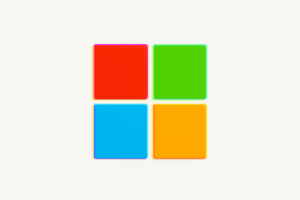Introducing the 2025 Annual Work Trend Index: The Rise of the Frontier Firm

The 2025 Annual Work Trend Index: Understanding Emerging Workplace Trends
The workplace is constantly evolving, and Microsoft’s 2025 Annual Work Trend Index sheds light on key trends that are shaping the future of work. This report provides insights into emerging patterns, employee preferences, and strategies that organizations can adopt to create a more effective work environment.
Key Findings from the 2025 Work Trend Index
1. Hybrid Work is Here to Stay
The report emphasizes the shift towards hybrid work models, where employees split their time between remote work and in-office presence. This flexibility aligns with employee desires for a better work-life balance. Organizations are recognizing the benefits of hybrid models, which can lead to increased job satisfaction and productivity.
2. Employee Well-being Takes Center Stage
A notable highlight from the index is the growing emphasis on mental and physical well-being in the workplace. Employers are increasingly aware of burnout and stress, prompting them to incorporate well-being initiatives. This includes providing mental health support, promoting healthy work habits, and ensuring that employees have access to resources that enhance their overall well-being.
3. Skills Development is Essential
As industries evolve, the demand for new skills keeps rising. The index points out that continuous learning and upskilling are essential for employees to stay relevant. Companies are encouraged to invest in training programs, online courses, and development opportunities to help their teams adapt to changing work environments and technological advances.
Technology’s Role in the Workplace Evolution
1. Enhanced Communication Tools
The rise of remote work has driven the adoption of advanced communication tools. The index shows that many organizations are investing in collaborative platforms that facilitate seamless communication, project management, and teamwork, regardless of physical location. Tools like Microsoft Teams, Slack, and Zoom are becoming staples in the modern workplace.
2. Automation and AI Adoption
Another trend highlighted in the report is the use of automation and artificial intelligence (AI) to improve efficiency. Many routine tasks can now be automated, allowing employees to focus on strategic and creative aspects of their work. As AI technologies continue to evolve, organizations are likely to leverage them for data analysis, customer service, and process optimization.
Building a Supportive Work Culture
1. Focus on Employee Engagement
Engaging employees is critical for retention and productivity. The Work Trend Index showcases the importance of creating a supportive culture where employees feel valued and involved. Companies should encourage feedback, recognize achievements, and create open channels for communication to foster a sense of belonging.
2. Embracing Diversity and Inclusion
Diversity and inclusion are central to modern workplace culture. The report stresses that organizations need to prioritize inclusive practices that promote diversity in hiring and career advancement. This not only enhances innovation but also reflects a commitment to equity and fairness in the workplace.
Future Implications for Organizations
1. Adapting to Change
Organizations must be agile and willing to adapt to the fast-paced changes in the work landscape. The index illustrates that flexibility is crucial; businesses that embrace new trends and remain open to experimentation are more likely to thrive.
2. Re-evaluating Office Spaces
As hybrid work becomes the norm, companies are rethinking their office layouts. This includes creating spaces that facilitate collaboration and innovation while allowing for quiet areas where employees can focus. The physical workspace must reflect the needs of a diverse workforce.
Key Takeaways
From the findings of the 2025 Work Trend Index, it is clear that the future of work is characterized by flexibility, technology integration, and a strong focus on employee well-being. Organizations should embrace these trends to foster an environment that supports growth, engagement, and collaboration. As businesses navigate this changing landscape, prioritizing the needs and preferences of their workforce will be essential for success.






